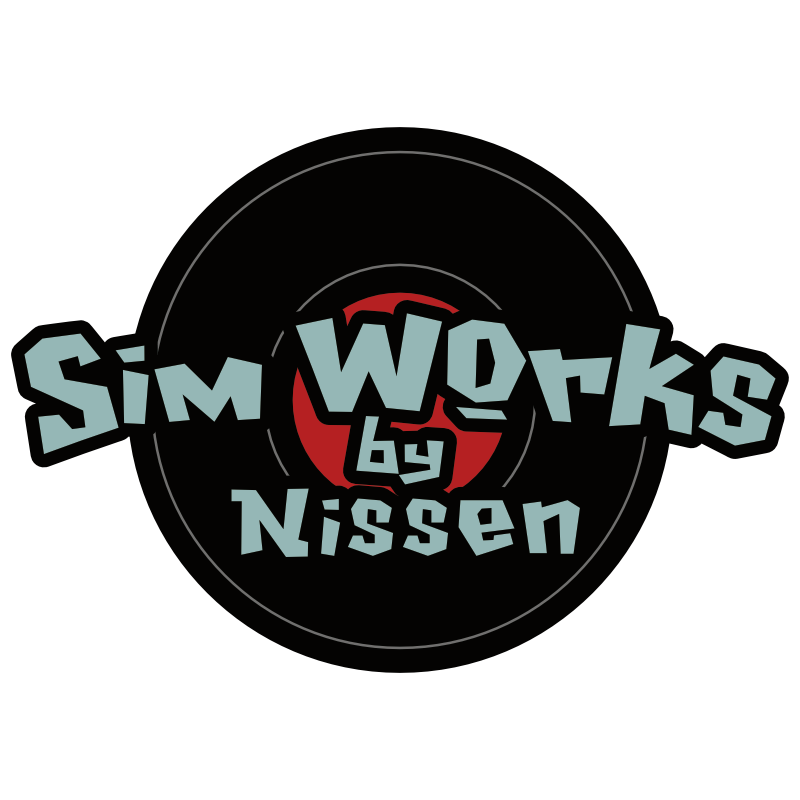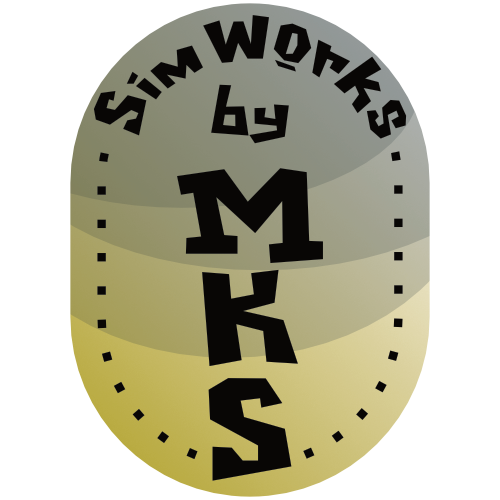SimWorks by Honjo Fender installation – Basic insights and tips

Installing Honjo fenders can feel like a daunting task, requiring a good deal of time and calculation. The end result is an elegant, effective and often necessary solution to keeping you dry and your bike running smoothly through the seasons.
What follows is a basic set of steps that can be used as a reference for accomplishing your own Honjo fender installation. The installation highlighted here is applicable to a bike with good clearance between tires and frame and bridges – a fairly straight-forward install utilizing stock hardware. I wouldn’t characterize myself as an expert at this. I’ve worked in shops and service departments and worked with these products over the years. Along the way you pick up tricks and shortcuts and ways to make this whole process go a little smoother. But it’s important to remember that all installations are unique to their given variables. These steps may not be applicable to your particular installation- or you may find other methods more in tune with your own needs.
Integral to just about any fender install is finding a center line on your fender. Using a piece of twine, I tie a taut loop around the fender and mark the twine at the underside of the fender on the rolled edge of each side of the fender. I then pull the loop off of the fender, line up the marks with each other and make a mark at the end- to find a mid-point between those marks that will effectively act as a reference for finding a center point on the fenders during install. A tailor’s tape can also be a good tool for pulling measurements on curved surfaces.



I tend to start with the rear fender during installs, because it takes longer and I like to get it out of the way. Mocking up the fender placement before I begin any drilling is critical for ensuring that I’ve given myself the appropriate clearances and that the final position will work with the hardware I have. Give yourself a decent amount of space that will allow the front, or tip of the fender to extend below your chainstay bridge. As a general rule I like to have the point where the rounded end of the fender transitions to straight, line up with the bottom of my chainstays. I like to start with the seat stay bridge mounting point because it will provide me with an initial fixed point that the fender can actually hang from without being supported. I add sections of masking tape to the fender where I’ll be marking and drilling. This is particularly necessary on black fenders but it’s a good idea on silver fenders as well, as the tape will provide a better surface to make accurate markings, and will prevent your drill bits and markers from wanting to walk. It will also help to protect the surface of the fender while you’re mocking up your fit. Depending on the nature of your install, this first hole may be a single hole that you’re drilling to direct mount to the underside of a seat stay bridge, or you may be drilling two small holes to mount a dove stay or diamond shaped reinforcement plate. The dimensions on the included stock front and rear dove stays are different. *The hole-spacing for the stays differs so be sure you’ve selected the correct stay. You may find that you need a taller dove-stay to mount your fender- in which case you would need to source that part separately. Using the reference tool you created for your center line- mark two points that you can connect to create a center line to position the dove stay on to mark your drilling points. A small drill bit should be used to create an initial “pilot” hole for all holes drilled on your fenders. Ideally, the holes you end up drilling will be just large enough to clear the various bolts that you’ll need to pass through the aluminum mudguards. You can size up from that initial bit size to remove additional material, and at times I’ll use small rifler files to deburr those holes and fine tune placement and orientation of holes for mounting hardware.




Hang the fender from the seat stay mounting point with the fender positioned such that it has ample clearance from your tire and provides a clean line that can be carried through the rest of the installation.
The space between your fender and seat stay bridge can be taken up with your preference in washers and spacers. Then proceed to your chainstay bridge mount. After taping the zone on the fender where you’ll be marking and drilling the hole for the chainstay bridge, you can mark a decent length center line that will correspond with your mounting point. I often will thread a cap screw into the chain stay bridge braze-on and use that bolt to give me a rough offset for dialing in my spacing between fender and bridge. Ultimately this space will be taken up with washers and spacers. *For folks with horizontal dropouts, be sure to provide enough space to be able to install and remove your wheel without having to deflate your tire.

Our leather washers and collar sets make for tidy and effective solutions for protecting the fenders and taking up space between the fender and frame bridges.
With the fender spaced at a position that will give you ample clearance and fender lines that are similar to your spacing from your seat stay bridge, you can mark the top and bottom of your reference bolt on the tape.

A midpoint between these markings along the centerline should be a good place to drill for your chainstay mounting bridge. Follow the same earlier steps for drilling a pilot hole and ultimately a hole that will fit your desired hardware. I prefer to use button head bolts for mounting to bridges as they have a rounded-off head and short profile.


With both bridge mounts secured, you can mock-up placement of your rear stay. The stay should be mounted in a location that provides optimal structural integrity for the remainder of the fender hanging behind your seat stay bridge. This distance varies greatly between various bike sizes and styles. Aesthetics are a factor here as well. Generally, mounting the stay “a bit” above parallel with the ground is a good place to start. You don’t want to leave too much “tail” beyond your stay. Mounting the 5R or 4R clips that will secure the U-stay to your frame is a good idea during mock-up as well, so you can confirm that your U-stay placement won’t conflict with welds, disc brake placement etc…Another factor to consider is whether you will be mounting a reflector or rear light mount and where that product will be placed in relation to your U-stay. Some installations may warrant mounting 2 U-Stays, in which case you would need to source the additional hardware necessary for this.

As with the previous steps, tape a section of the fender, draw a center reference line, and when you’ve landed on a location for your U-stay, you can use the Stay Band to mark your two holes for mounting this bracket, or a single hole for users opting to mount a Whittle Type Clamp.
Mount the U-Stay – *taking note that the stay is stamped with “Honjo” on one side- which should face the drive-side of the bike – and leave it loose enough that you can manipulate the “twist” on the fender. With the rear wheel installed, pass the U-stay through the clips on the frame and gently pull the fender in to place, positioning it so that you have ample clearance and similar fender lines as you did with the bridge mounts. You will note that your stay is too long and will need to be trimmed. You may also find that your QR skewer interferes with the stay at this point. Removing your bike from a repair stand and placing it on the ground and removing the QR skewer may be necessary to mock-up final fit at this point. Mark the stay with either a marker or tape just past the end of the clip set- leaving yourself a few extra millimeters for adjustment and tweaking.


Also at this time, make note of a point along the length of the stay back from the frame a short distance that you can mark to add a slight bend to the stay. This point can be measured from the end of both sides of the stay. This bend in the stay will allow the stay to enter the clip parallel with the clip and decrease stress on both your fender mount and the fender itself. You’ll need to remove the stay from the fender to trim the ends and to add the slight bend to the U-stay- which should be done by securing the stay in a vise and bending it- carefully, and then replicating it on the other side. The stay can be trimmed with a hacksaw or a cutting disc on a Dremel tool or similar. After cutting, a few passes with a hand file to deburr and round off the end is a nice touch. At this point, now that I’ve checked fit, I’ll remove the fender entirely from the frame, remove any remaining tape, check that my holes are all deburred, and remount all hardware with a few drops of thread retaining compound, and remount the fender, making sure to sufficiently tighten all fasteners.
The front fender is essentially a repeat of the rear- although only having to secure the fender to the fork crown and dropouts. Again take care in determining that your placement is checked before marking and drilling any holes, and if you are using a dove stay to mount the front fender to a hole in your fork crown- ensure that the dove stay you are using will provide you with the appropriate height and clearance. As with the rear fender, giving yourself the proper amount of tip and tail will afford you with the protection you need and pleasing orientation on the bike. *When mounting the front U-stay- keep in mind any issues with toe-overlap and efforts to mirror your rear U-stay when determining where to mount your bracket. Otherwise, most of the steps from the rear fender can be repeated up front.
We hope the information here has been helpful and that if your specific installation differs- the info here may at least set you on a good path for working through some solutions of your own. The process is part of the joy and we’re confident that with some patience, you’ll end up with a finished product that you’re happy with.
As always, don’t hesitate to reach out to either us here at Simworks – contact@sim-works.com ,or one of our authorized dealers with your questions.
Please refer to the following articles for additional mounting references and tips:
>>> SimWorks Fender fatigue/failure Advisory
>>> Honjo fit considerations
>>> Honjo fender stay alignment for maximum structural integrity












